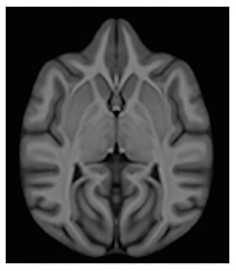Key Features

scan of chimpanzee brain.
For many neurological, neurodegenerative and psychological disorders, the extent to which they are manifest as a consequence of uniquely human brain specializations or have a shared origin with other primates remains a central topic in neuroscience. Chimpanzees are among the closest living relatives of humans, making them a key species to study in order to understand the evolution of the human brain.
The NCBR serves as a repository for in vivo structural MRI scans of chimpanzee brains, in vivo and postmortem diffusion tensor images (DTI), as well as postmortem fixed and frozen brain specimens. These collections represent the largest consolidation of chimpanzee brain resources anywhere in the United States.
A unique strength of the NCBR lies in the multi-modal, multi-scale nature of the resource. It contains comprehensive behavioral and cognitive tasks, pedigrees, rearing history, neuroimaging data, and postmortem brains from the same individuals in many cases. This offers an unprecedented opportunity for research concerning individual variation and relationships between brain structure and function relative to development and cognitive capacity in a nonhuman primate.

